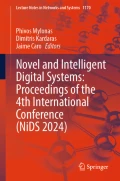Bridging Creativity and Code: A Case Study on Integrating Design Thinking in Software Engineering Education
Lead Researcher(s): Fernand G. Bernardez
Status: Published
Abstract/summary: This study examines the integration of Design Thinking (DT) and Agile-Scrum in undergraduate software engineering education to address the growing demand for creative, user-centered, and collaborative developers. Implemented across two project-based courses–Software Engineering 1 (SE 1) and Software Engineering 2 (SE 2)–the intervention followed a phased hybrid model: SE 1 emphasized empathy-driven problem framing and ideation, while SE 2 focused on iterative implementation through Agile sprints. A total of 65 students participated, with data collected using validated rubrics and focus group discussions. Mixed-method analysis revealed high performance in user-centered design, innovation, and ideation, corroborated by rich student reflections. Participants reported that DT improved their understanding of user needs and fostered meaningful team collaboration. Tools such as Trello and GitHub enhanced task coordination and version control. However, students also cited time pressures and uneven workload distribution as challenges, particularly during Agile sprints. The findings highlight the value of combining DT and Agile in a structured curriculum and recommend adaptive pacing, peer evaluations, and ongoing mentorship to optimize learning outcomes and prepare students for real-world software development.
Keywords: Design Thinking; Agile-Scrum; Software Engineering Education; Project-Based Learning; User-centered Design; Creativity; Team Collaboration; Iterative Development; Trello; GitHub
